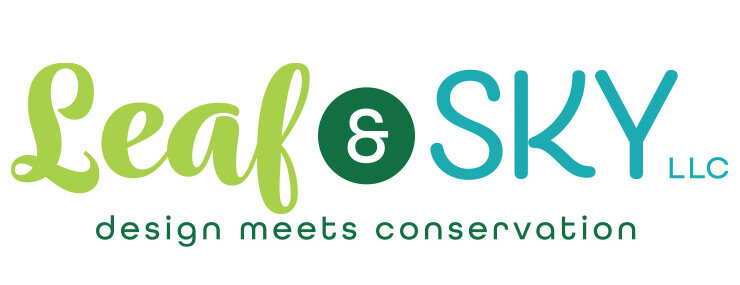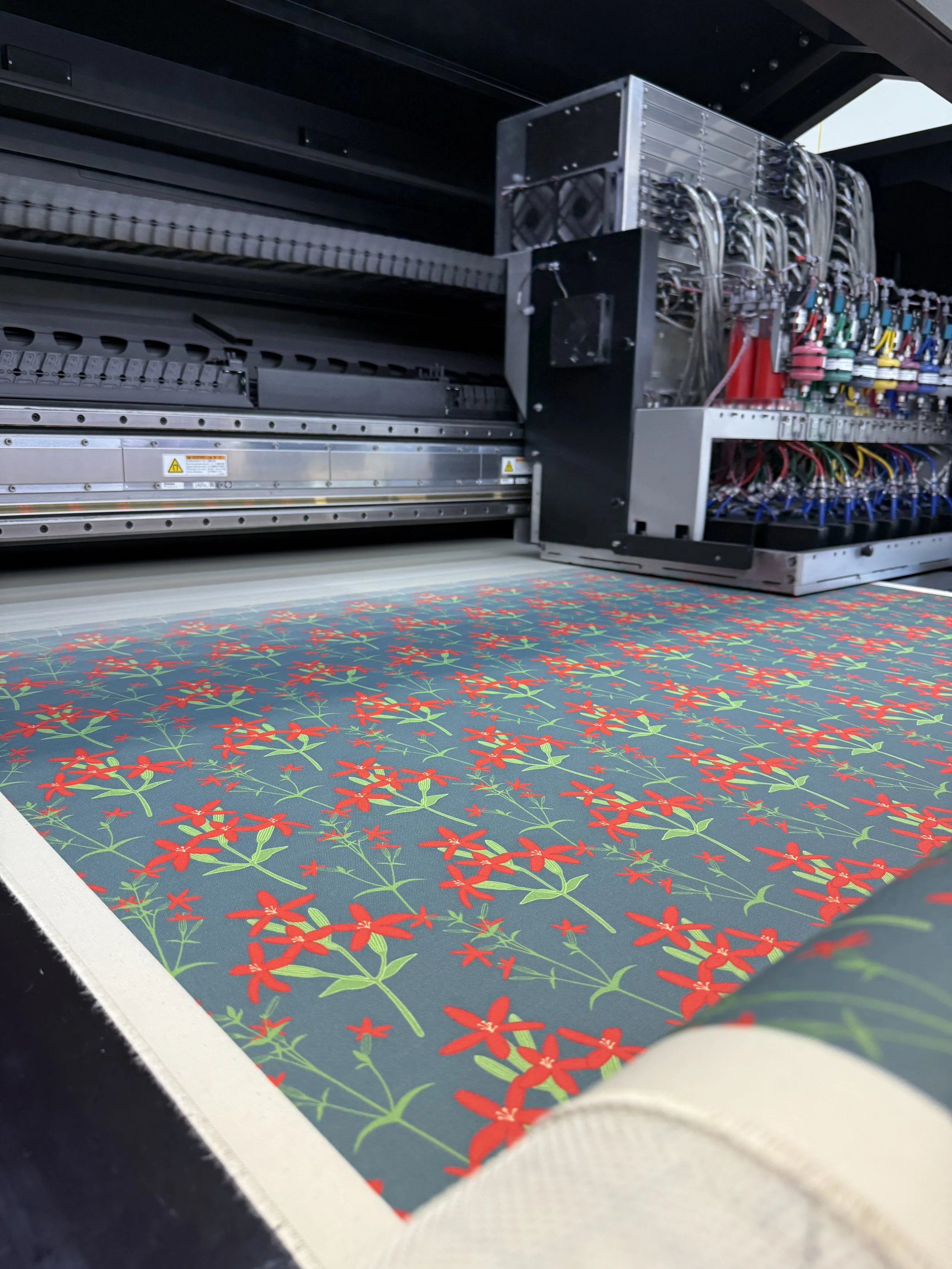Art to product—how does it work?
Occasionally, a visitor to our market tent will say, “Oh, so you create the patterns. Do you screen print the fabrics?” My response is “Yes, I create the patterns which I have custom printed on organic fabrics.” Leaf & Sky is different in that we create the art, have it printed and then make the products ourselves. These are more steps than most small batch makers.
The only place on this continent I know doing hand screen-printing on fabric yardage is the Fabric Workshop in Philadelphia, where they have a giant print studio and it takes 2 people standing on either side of a long table to pass the squeegee of ink back and forth across the fabric. Each ink color requires another step of the two-person squeegee process. So no, it isn’t possible for us to print our complex patterns in our small workshop.
This is how how my process works. I start with research about native plants and the pollinators that rely on them. In our yard, we have about 40 different native plant species. Observation of the ecosystem taking place in our yard directs me to choose particular species on which to focus. I develop artwork through a drawing process—this can take quite a bit of time. And no, I do not use AI—I am a humanist. Next, I scan various drawings, and work with them digitally to create the line qualities and shapes I want. Design of the pattern is quite a mathematical process. Lastly, I design the color way.
Production starts with finding organic cotton fabric with the qualities we need for our products. Our choice medium-weight cotton requires a special order of 100 yards. It’s always a challenge working through how much of each pattern to get when you have to buy 100 yards at a time.
The digital seamless repeat files are sent to the press where they use a dye-sublimation printing process which binds the ink directly onto the fabric. This eco-friendly process does not use water like other dying processes. The photo below shows our Royal Catchfly pattern in the printing process. This pattern is 5-color. As you can see by the ink set in the photo, this printer house could create any color way.
Once the fabric is printed, it ships to us from a few states away and we begin the cutting & sewing processes. This is what 100 yards looks like when it arrives.
All the fabric is pre-washed to remove the finishing treatment. And then the cutting begins. I am the primary “Cutter”, its another math process to figure-out how to best cut products in which patterns to create our various home good and accessories goods. It is an ongoing process based on inventory and demand.
Many pieces are sewn here on Rex, the 75 year old industrial sewing machine, once owned by my grandmother. We also contract production sewing to several sewists, creating work in our local economy. We couldn’t keep up with our home goods if not for the lovely folks who help us sew. My focus lately, beyond cutting and inventory, is making totes and other personal bags. New bags coming soon!





